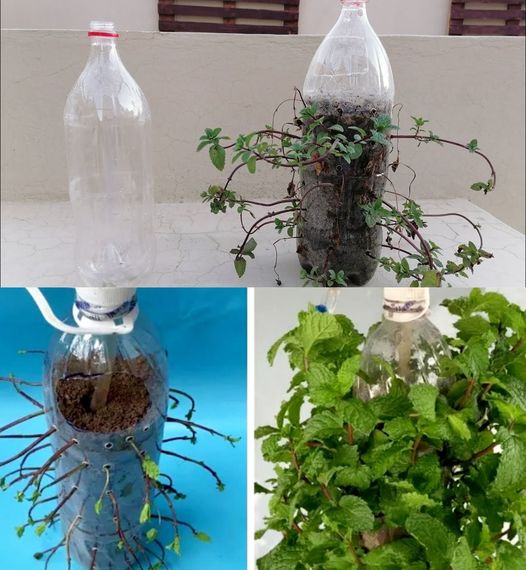How to Grow Mint at Home: Planting, Cultivation and Care
Mint has therapeutic virtues, particularly on the digestive system and the nervous system. Here is how to successfully grow this aromatic plant with its many popular culinary uses.
1 – MANY VARIETIES
The different species of mint form a genus: Mentha. There are about 25 species, not counting the many cultivated hybrids.
- Spearmint (Mentha spicata): Native to North Africa, used for mint tea.
- Field mint (Mentha arvensis).
- Water mint (Mentha aquatica): Found in very humid places, at the water’s edge, it has a menthol smell.
- Peppermint (Mentha x piperita): A cross between spearmint and water mint with a strong scent.
- Spearmint (Mentha suaveolens).
- Pennyroyal (Mentha pulegium): Widely used in Spain and Italy.
2 – WHERE TO PLANT MINT?
Mint appreciates rich, moist and humus-rich soils. It flourishes best in places with partial shade and away from the wind. Very invasive, this aromatic plant is best grown in pots. However, it can be planted in borders, in the ground, in a container or in a vegetable garden.
Mint also repels many insects in the vegetable garden. It thrives with cabbages, broccoli, tomatoes and peas, but does not appreciate the company of carrots, corn and cucumbers.
3 – GROWING MINT: THE METHOD
A good solution may be to grow mint in a pot without contact with the soil. It is totally possible to grow mint on a balcony or indoors in this way, with gentle heat and light.
Conversely, if you want to grow mint in the open ground, choose a well-kept plot of land, without weeds, and carefully monitor the roots so that they do not leave a delimited area – unless you want a mint garden, to each his own. The plant can be impressive: it reaches 60 centimeters high in some cases.
To grow the plant, know that it will be much easier to plant mint directly than to sow it, even if this operation is not impossible. In any case, it will be necessary to estimate its needs before deciding on the quantity to sow or plant. Know that the plants are spaced about 15 centimeters apart. In this case, concretely we can start a little later in the season, depending on the region where we live.
Then, you just need to water the plant regularly and fertilize the soil so that the mint grows well in the following years. It is also recommended to prune the plant a little: the stems in mid-season, and the plant close to the stems just before winter.
4 – MAINTENANCE
Mint requires little maintenance: a simple pruning after flowering is enough (shorten the stems significantly: the plant will produce new ones, bearing leaves rich in aromatic substances). Potted mints need to be repotted every year, in spring or autumn, because they quickly exhaust the substrate. Note that a mint plant must be replaced after a few years (3 on average), because it loses its vigor and the leaves become less aromatic. Finally, the main parasite of mint is a green beetle, the mint leaf beetle: so keep an eye out for its possible appearance.
5 – HARVEST THE MINT
You can either cut the stems or pick the leaves directly. We advise you not to pick more than a third of the mint leaves at one time. If you decide to cut the stems, it is also advisable not to cut the plant too short so as not to slow down regrowth. It is best to harvest according to your needs, aromatic herbs grow quickly, which should allow you to always have some available. Harvesting the shoots as you go also allows you to preserve all the flavors and aroma, which is not always the case when you preserve them!
